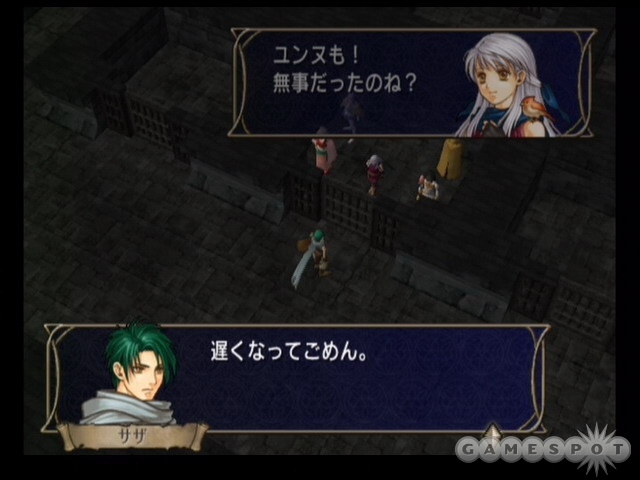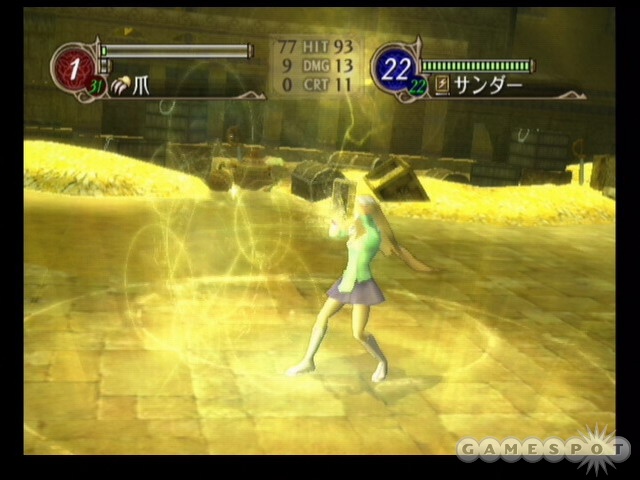Fire Emblem (working title) Import Hands-On
We check out the Japanese-language version of Intelligent Systems' latest turn-based tactical combat game.
Recently released in Japan with the subtitle Goddess of Dawn, the Wii's first Fire Emblem game doesn't currently have a confirmed release date for North America or Europe. An English-language version will certainly be released at some point, but in the meantime we've been checking out the Japanese game to get a feel for it and to find out whether or not it's import friendly.

Given the text-heavy nature of its character-driven storytelling, playing Fire Emblem in a language other than your own means missing out on what has traditionally been one of the turn-based strategy series' strengths. Fire Emblem: Goddess of Dawn--which has not been confirmed as a title outside of Japan--takes place some three years after the events of Fire Emblem: Path of Radiance, which was released for the GameCube in 2005. That game's war between the kingdoms of Daein and Crimea has ended, but life is anything but good for the oppressed people of the Daein kingdom, who still live in fear of occupational forces. The central characters in Goddess of Dawn are a dagger-wielding thief name Sothe, whom you might remember as a playable character in Path of Radiance, and his companion Mikaya, a silver-haired mage who used to work as a fortune teller. Both are members of the Company of the Dawn, a group of chivalrous thieves and bandits who are determined to rescue the people of Daein.
Regardless of whether or not you understand Japanese, those of you who have played previous Fire Emblem games should have few problems getting to grips with Goddess of Dawn's turn-based combat system. The first few battles that you fight task you with controlling only two or three characters and with defeating only a handful of weak opponents, but rest assured that things get much more demanding as you progress and your party grows. You'll have the option to check out various tutorials as new abilities become available to you in combat, and although they're presented in Japanese text, the accompanying animations are usually enough for you to get the gist of what's being said. It was through watching a tutorial that we learned, for example, of the ability to highlight multiple enemies simultaneously in order to map out their movement and attack ranges and, in doing so, identify safe locations in which to position weaker members of our party.
After playing through only a handful of battles you'll find that your party has grown to around eight characters, and it won't take you long to figure out how best to use each of them. Unlike Path of Radiance, which awarded you experience points after each battle that you could then spend on improving any character you wish, Goddess of Dawn employs the same system used in older Fire Emblem games, whereby individual characters earn experience based on their own actions. This means that rather than have your most powerful characters do all of the work, you'll need to get everyone in your party involved if you don't want them to fall behind in levels and become useless later on as a result. You'll also need to give some thought to leveling up characters who aren't necessarily part of your first-choice team--not only because certain battles will require you to rethink your lineup, but also because the death of any character is permanent (as in previous Fire Emblem games), so it's useful to have some battle-ready reserves waiting in your ranks. The death of a story-critical character will of course mean game over.

Once you get a handle on which options in which character's combat menu do what--locating the priest's heal spell as soon as possible is recommended--you'll find that Goddess of Dawn's battles are every bit as demanding tactically as those in previous games. Even the game's early battlegrounds offer several different paths to victory, and it doesn't take long for the mindless enemies that you'll be slaying for kicks in the first few levels to be replaced with ferocious adversaries who actively go after weaker members of your party. Boss-style characters also figure occasionally, and while those that we've come up against to date haven't been particularly challenging, we've certainly had to put all of our characters' abilities to good use in order to defeat them without taking any casualties.
Perhaps the most surprising thing about the Wii's first Fire Emblem game, although it's not something that we're disappointed about, is that the game doesn't support any of the console's unique motion-sensing controller options. In fact, the game can be played with either a Wii classic controller or a regular GameCube controller, if you prefer either of those to using the Wii Remote in its somewhat unwieldy sideways orientation.
Fire Emblem: Goddess of the Dawn appears to be another quality entry in a consistently enjoyable franchise, but it's one that certainly has a lot more to offer when played in a language that you completely understand. It surely won't be long now before Nintendo announces release dates for the game in territories outside of Japan, and we look forward to bringing you more information as soon as it becomes available.
Got a news tip or want to contact us directly? Email news@gamespot.com
Join the conversation